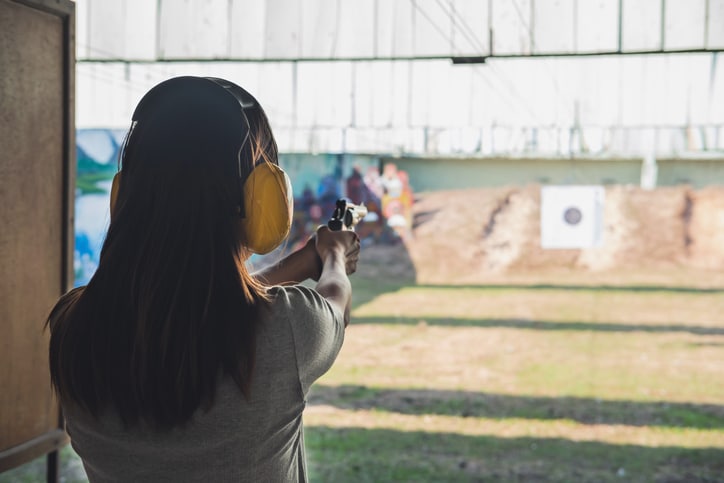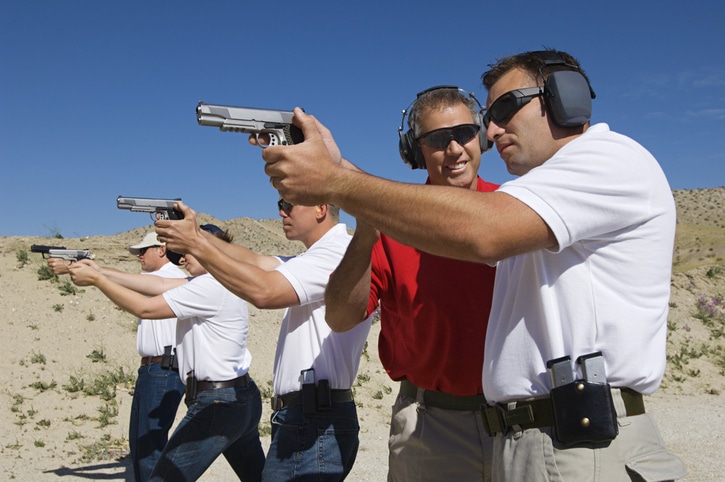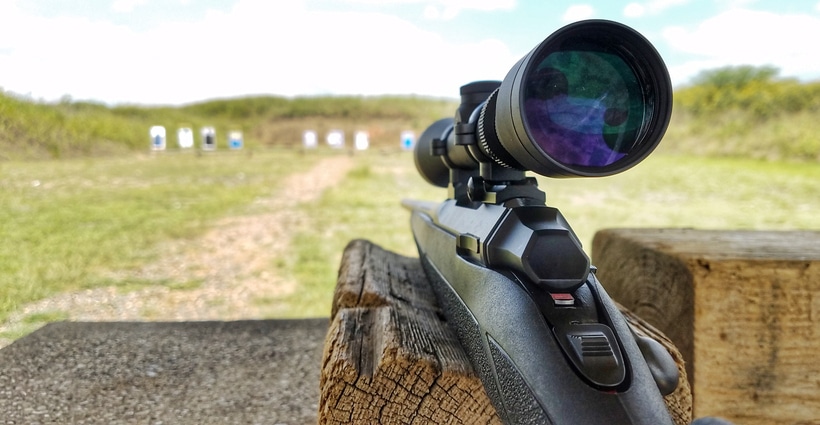Whether you’re a first-time shooter or a seasoned firearm enthusiast, understanding the different types of target practice ranges can help you choose the right environment for training, recreation, or competition. Shooting ranges vary by setting, ownership, and the kind of shooting they accommodate. Below, we break down the most common types of shooting ranges and what makes each unique.
1. Indoor vs. Outdoor Ranges
Indoor Ranges

Indoor shooting ranges are enclosed, climate-controlled facilities often found in urban or suburban areas. These ranges provide a consistent experience regardless of weather, making them ideal for year-round practice. Many feature automated target retrieval systems, allowing shooters to adjust distances with the push of a button. However, indoor ranges are usually limited in distance, often capped at 25 yards. There may also be restrictions on certain calibers, ammunition types, and shooting styles such as rapid fire.
Outdoor Ranges

Outdoor ranges offer a more natural and open-air environment, often located on the outskirts of cities or in rural areas. They typically support longer distances, sometimes stretching out to several hundred yards, making them ideal for rifle training and long-range shooting. Outdoor facilities also support more dynamic shooting exercises, including movement-based drills and shooting from cover. The downside is their exposure to weather conditions, which can limit accessibility during rain, wind, or extreme temperatures.
2. Public vs. Private Ranges
Public Ranges

Public shooting ranges are accessible to anyone for a daily or hourly fee. They are often operated by government entities like the Arizona Game and Fish Department or by private businesses. These ranges are ideal for beginners and casual shooters due to their affordability and accessibility. Public ranges may be busier, especially on weekends, but they offer a great entry point for people getting started with firearms training.
Private Gun Clubs

Private ranges operate on a membership basis, typically charging annual fees in exchange for exclusive access. These facilities are often quieter, more private, and may provide better amenities such as training classes, competitions, and members-only events. Private clubs may also offer longer shooting hours, more flexibility in shooting styles, and specialized ranges for different firearms.
3. Specialized Shooting Ranges
Beyond the basic classifications of indoor, outdoor, public, and private, there are ranges designed for specific types of shooting. 
These include:
- Rifle Ranges: Designed for long-distance shooting with targets commonly set at 100, 200, or even 1,000 yards. Perfect for precision shooting and scope calibration.
- Pistol Ranges: Focused on short-range practice, typically under 50 yards, these ranges are ideal for handgun drills and concealed carry training.
- Shotgun Ranges: Dedicated to shotgun sports such as skeet, trap, and sporting clays. These ranges use flying clay targets to simulate bird hunting.
- Tactical or Dynamic Ranges: Built for advanced shooters, law enforcement, or military training, these ranges allow movement, use of cover, and real-world scenario simulation. They often feature moving targets and custom layouts.
- Archery Ranges: Though not for firearms, archery ranges are target practice facilities where users train with bows and arrows. They vary in distance and can include 3D animal targets for hunting simulation.
Choosing the Right Shooting Range
The best type of shooting range depends on your goals, location, experience level, and preferred shooting style. Indoor ranges are excellent for consistent, weather-free practice. Outdoor ranges offer more distance and flexibility. Public ranges are affordable and welcoming to new shooters, while private clubs deliver a premium experience with additional perks. Specialized ranges cater to those with specific interests such as rifle accuracy, tactical defense, or shotgun sports.
Final Thoughts
Understanding the different types of target practice ranges helps you make an informed decision about where to shoot. Whether you need a convenient indoor range, a long-distance outdoor facility, or a specialized environment for tactical training, there’s a shooting range designed to meet your needs.
BONUS
We’re considering adding a directory of shooting ranges for our readers to add to, but in the meantime, check out wheretoshoot.org! It’s a directory created by the NSSF (National Shooting Sports Foundation / Firearm Industry Trade Association). The list is really comprehensive, has an interactive map and helps you find a shooting range near you!

